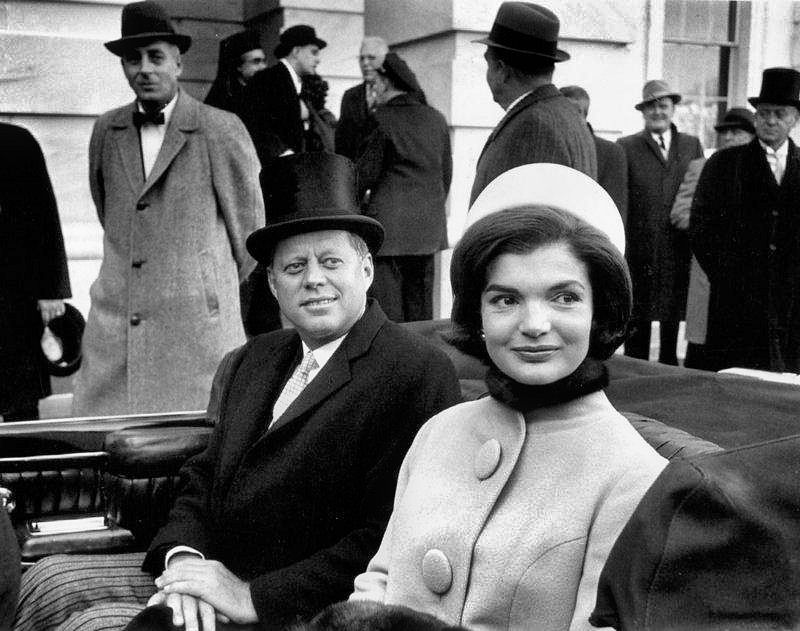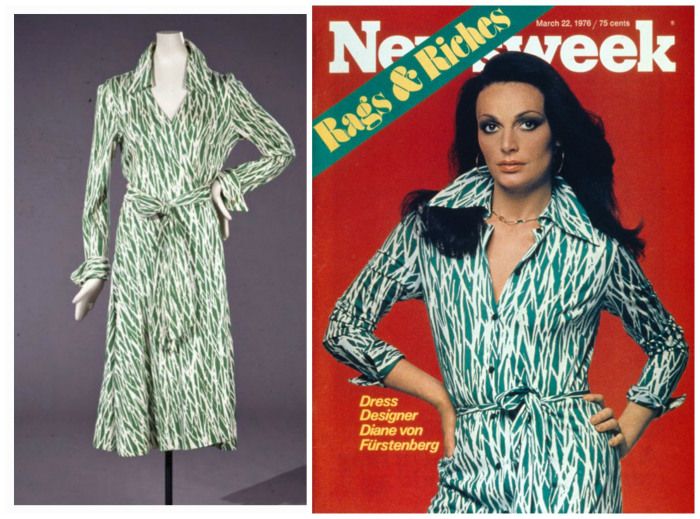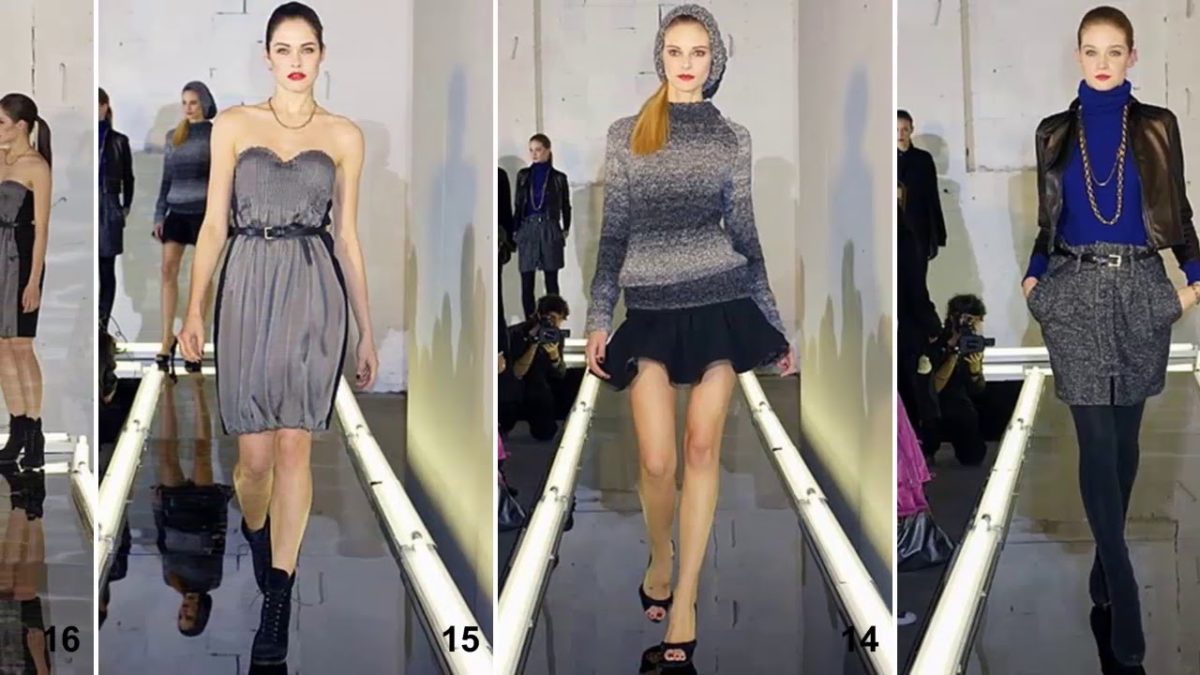Fashion Industry Broadcast and Style Planet TV are proud to bring you their new Netflix Original series ‘The Girl’s Guides to the World of Designer Fashion’. In Series 4 of this new Original Series we explore the History of American Fashion.
By the late seventies things had swung back to a more relaxed and conservative look with long flowing dresses and elegance taking centre stage. Ralph Lauren became the quintessential American designer, capturing the aspirational lifestyle of Americas’ upper crust society with his brand of gentrified American Staples. Lauren elevated 20th century pieces already in circulation, from chinos, oxfords, flannelette’s and the brands signature polo shirt under one luxury banner.
Lauren hailed from a New York landmark, opening his small studio in the heart of the Empire State building with his founding line of men’s neck ties. It was not long before he expanded into a full range, bringing classic tailoring and masculine silhouettes in the early 70s to both men and women. During this period his clothing was spotted in the timeless adaptation of the Great Gatsby starring Robert Redford. It was a classic American story which culturally placed Lauren further into the heart of the American identity.
Beyond its 50th Milestone celebrations, the Ralph Lauren brand remains a global go to for consumers and designers alike, playing with the rules laid out by the brands founder. Its style has permeated the realms of hip hop and music moguls, basketball and skateboarding, to world class soccer stadiums, finding relevance in audiences looking for Ralph Lauren’s simple sophistication.
Where Ralph Lauren represented the ivy league lifestyle, Roy Halston was America’s answer to 70s and 80s glamour. Creating one of a kind head pieces, Halston found himself at the helm of Bergdorf Goodman’s millinery department leading to his brush with American royalty. Jacqueline Kennedy Onassis donned a Halston Pill Box hat to JFK’s presidential inauguration and the rest as they say was history. Soon Hollywood icons beckoned from Rita Hayworth to Marlena Deitreich, Halston commanded an A-list clientele and the press that follows.

But the best was yet to come. From the silver screen to the annals of pop culture Halston dressed the dance floor of the 70s discotheques and infamous hotspot Studio 54, surrounding himself by the artists of a new generation Andy Warhol, Bianca Jagger and Liz Taylor to name but a few. In consideration of his Jet Setting Followers, Halston worked with durable, easy to wear materials like jersey and cashmere that he developed into a chic womenswear line that culminated into fashion’s most iconic pieces from a Halston jumpsuit, shirt dress and Kaftan to his signature Halter dress introduced in 1972.
He became the first designer to incorporate himself into the brands licence ‘Halston’ which also became his singular moniker. Halston went from strength to strength professionally, but became unstuck as his personal life spiralled out of control battling substance abuse and the AIDS disease which would later claim his life. Today Halston Heritage champions the late designers legacy with a lifestyle brand that holds up to its founders vision for modern effortless designs for edgy women.
At the same time there was an audience for a more overstated form glamour. It’s not often that a costume designer crosses comfortably between the red carpet and the runway, but Bob Mackie is the exception. Mackie’s work has captured the attention of Hollywood Legends, Music Divas and the academy, with three Oscar nominations and nine Emmy awards to his name. He has been dubbed “the Sultan of Sequins and the Rajah of Rhinestones” for his brand of high glamour that uses beading, feathers and sequins to catch the light and cast a star quality around its wearer.
From Tina Turner to Cher, Dianna Ross to Madonna, there are few greats he has not dressed. He started out as a sketch artist for Paramount pictures, and even drew the original sketch for Marilyn Monroe’s nude illusion dress she wore to the now infamous birthday party for JFK. Mackie was responsible for starting this idea of the “naked dress” where flesh is artfully covered in decoration for modesty, whilst at the same time appearing to be nearly nude. Not surprisingly, he was the most in demand designer for film and television, with a prolific catalogue of work under his 11 years designing for the Carol Burnette Show. By the early 80s he turned his skills to ready-to-wear to an eager public and a dubious fashion industry.

The tides have well and truly turned with the CFDA community honouring Mackie with the Geoffrey Been Lifetime Achievement award in 2019. Named in honour of another great designer from the 60s, Been was the first American designer to show in Milan, Italy, opening the gates for American designers to land on one of the world’s leading runways.
Donna Karan is another great institution when it comes to American Fashion, setting the bar for her global influence by bringing uptown New York Style to the world. She pioneered the ‘capsule collection’ concept and crafted one of the world’s biggest diffusion lines DKNY. She learned from the best rising through the ranks under another American Fashion Giant Anne Klein; whose work was responsible for continuing the tailoring techniques of Coco Chanel by bringing men’s tailoring to women’s wear as well as founding the “Junior Miss” category for the teen fashion market we now know today.
Karan took over the reigns after the death of Klein managing a smooth and upward trajectory for the brand. By the 80s conservatism was back on the agenda, and a focus in on wall street led to an 80s boom and the art of power dressing, where women took on masculine styles to compete in the male dominated market. For Karan it was the start of her eponymous label, she left Klein and found her niche servicing the boom of professional women at that time with her modern tailoring.
Noticing a gap in the market for price point friendly pieces Karen jump started a diffusion line DKNY, DKNY Jeans and DKNY for men. In a record deal Karan signed over the business to Luxury Group LVMH staying on as designer until the mainline was shut down in 2015 to concentrate on the DKNY ranges. Karan remains a fashion powerhouse and social campaigner bringing Urban Zen – a socially conscious brand to the market, being one of the first to drive a portion of her online sales to charitable initiatives.
When power dressing dominated the fashion scene Dianne Von Furstenberg offered a counterbalance, making it okay to be feminine in a male dominated world. Success for Dianne was possible without subjecting to masculinity, a model of this her self, she remains a strong female icon at the helm of a global fashion empire. Originally from Belgium, Dianne’s strength can be traced back to the holocaust survivors she descended from. She moved to New York as the wife of royalty, having married an Austro-Italian Prince in the late 60s. Her wrap dresses which combined a two piece top and skirt into one easy-to-wear dress, became a seventies sensation.

She sold into the millions and attracted the attention of publications like the Wall Street Journal, cementing her self as both a designer and business woman, charismatic, exotic and a force unlike the world has seen before. On the back of her success an empire was born, launching a cosmetics line, home and lifestyle stores and a profitable eye wear range. After stepping back for a hiatus in Paris,
Dianne took back control of the line and her namesake, reviving the ready to wear line with her signature wrap dress for the new generation and naming her daughter as Creative Director of DVF. Dianne remains a constant presence on the Fashion Scene championing young talent and even starring in her own reality show House of DVF in search of the brands next gen ambassadors, ever pioneering the way forward for the fashion industry.
The persistence of unisex style underscores modern fashion today, with the feminine and masculine roles merging into androgyny and even further into completely gender less styles. Today’s progression towards gender fluidity both in sexual orientation and societal roles has created a brave new world for designers who can dance between the influences of existing and ancient archetypes, for both commentary and design’s sake as their creative freedom wills.
For Tom Ford whom could have succeeded in any field of his choosing, his creative freedom led him to keep his field of interest wide open. From studying art history to architecture at Parsons in New York, Ford jumped ship finalising his studies in fashion at the esteemed Parsons School for design in Paris during the mid 80s. Ford paid his dues designing for luxury New York houses before landing a life changing role with Gucci. Gucci Group whom at the time was struggling to stay relevant saw Ford as a breath of fresh air, skyrocketing Ford from designer of womenswear to the position of Creative Director in just 4 short years.
Ford revitalised the brand, injecting some much needed sex appeal with some retro twists for a modern woman. Under his direction the group acquired Yves Saint Laurent which became synonymous with Fords androgynous tailoring and slim lines. In the mid noughties Ford broke free to branch out under his own name to critical acclaim, but what took the world by surprise was his deft hand at film making stunning the world with his highly stylised masterpieces The single Man and later Nocturnal Animals in what is turning out to be Fords most expressive art form to date as it encapsulates his love of design, style and story telling under one platform.
Marc Jacobs was another native New Yorker and Parsons prodigy to make a name for himself, becoming the youngest recipient of the coveted CFDA Perry Ellis Award for New Fashion Talent. Jacobs did not disappoint! After a successful stint at Perry Ellis, it was clear Jacobs was carving his own grunge style apart from the Ellis brand, launching into his own label, the Jacobs cache continued to grow landing him at the top, as head creative director for Louis Vuitton’s Luxury House in the late nineties. A survivor of addiction Jacobs battled on to present the first ready to wear line for the house, alongside the pressure of running his own eponymous label. Jacobs remained at the helm of LV for well over a decade passing the reigns to focus once more on his line and collaborations, which still pull in the praise, including taking home an accolade for his trailblazing ways at the recent 2019 MTV awards.
Another trailblazer is Americas young gun of fashion, Alexander Wang. Of Taiwanese descent, Wang was a child of the 80s born and raised in San Francisco, an epicentre for music, rich in culture stemming from its roots in jazz and rock and roll, to producing heavy metal giants Metallica and punk rockers Green Day from the melting pot that was the Bay area. In reflection of this, his hunger and interest in creative pursuits was evident from an early age, attending a summer program at the esteemed fashion design institute Central Saint Martins of London. After graduating from high school, he enrolled in Parsons of New York, keeping one foot in the industry by interning for the worlds leading fashion publication American Vogue and for his predecessors Derek Lam and Marc Jacobs.
Confident in his craft Wang dropped out of design school to begin his career. Focusing in on cashmere sweaters and launching his label with a knitwear collection. By the fall of 2007 he dropped his ready-to-wear collection on a New York runway, attracting the attention of the CFDA fund. The Council of Fashion Designers America is a not for profit trade association founded in the early 60s to promote Local industry and together with Vogue magazine they created the CFDA Awards, an exclusive competition to provide mentor ship and exposure for young talent and importantly provide funds to elevate a small business into global one.

Photo Credit: Pinterest
Wang took out the award in 2009 and hasn’t looked back. In the next two years the designer launched Women’s T by Alexander Wang, Men’s T by Alexander Wang and a footwear label. He was named best menswear designer by GQ magazine and was picked up as creative director for Balenciaga for the following three years. Today the designers unisex aesthetic, with it’s mix of rawness and refinement is represented in flagships all over the world with his renowned leather goods, cutting edge designs and on trend accessories.
It is clear from young designers like Alexander Wang that the legacies of the American Titans of fashion still hold great impact, etched into histories archive and ready to influence the next generation of designers, who seek to make their own mark on the world of fashion.
American style cannot be defined by a choice between a white or blue collar. American fashion styles are as diverse as the number of nationalities that make up the USA’s ethnic backbone. America may have given the world the iconic blue jeans and the t-shirt but it has done far far more to make a lasting and important imprint on world fashion.
The Girls Guides to Designer Fashion
This new 6 part series explores the seductive world of designer fashion.
Series 1. The History of Lingerie
Series 2. The Legend of the Designer Bag
Series 3. The Mystery of the High Heel
Series 4. American Fashion
Series 5. Italian Fashion
Series 6. Paris Fashion
Subscribe to FIB’s newsletter for your weekly dose of music, fashion and pop culture news!






